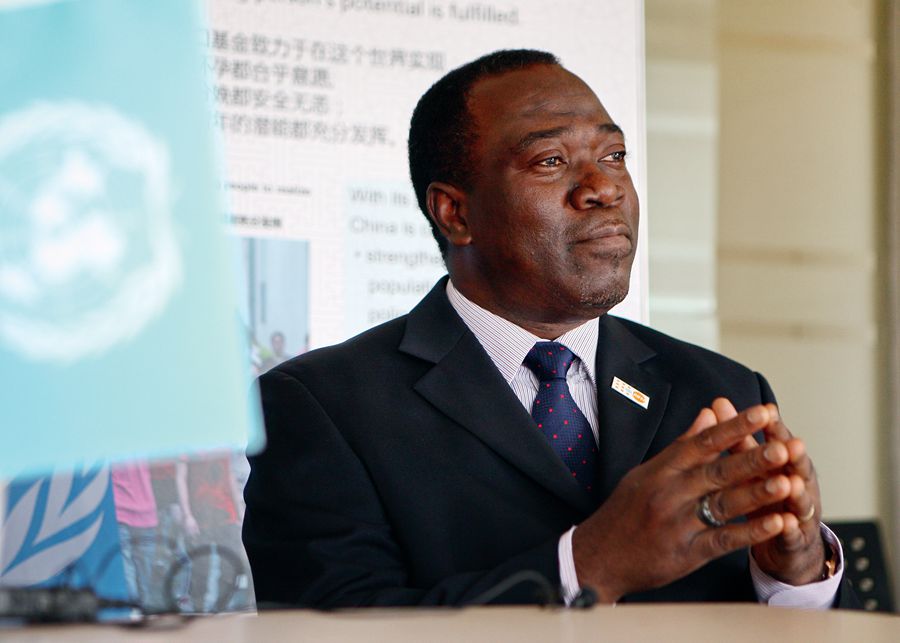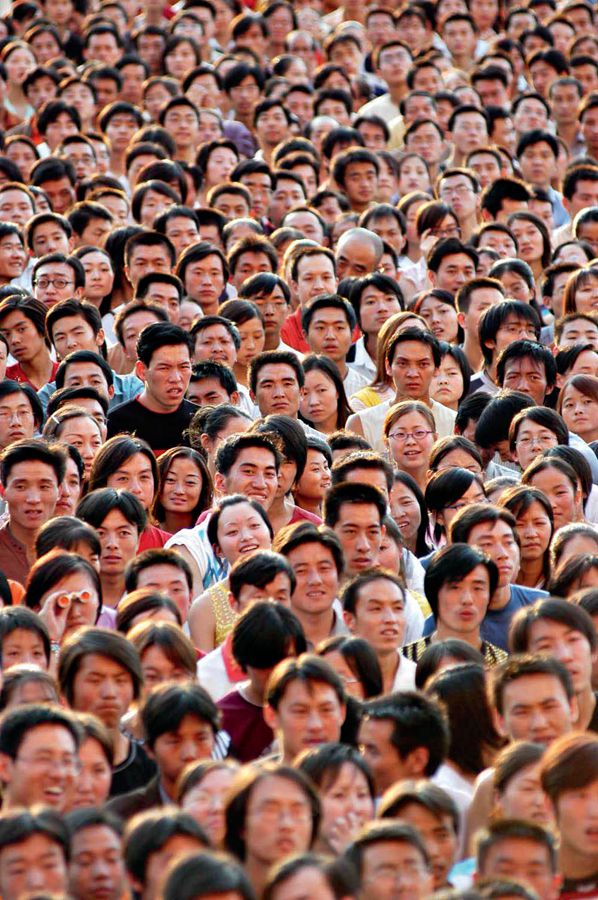POPULATION development has always been a fundamental, prominent, and strategic issue facing human society. Since the beginning of the 21st century, China’s demographic structure has undergone major transformations. And there will be new landmark changes in the near future. In an interview with China Today, Dr. Babatunde Ahonsi, the United Nations Population Fund (UNFPA) Representative in China, said, “China faces a situation of sustained low fertility and rapid aging.” These trends not only directly change the situation and tasks facing population development, but also bring tremendous and far-reaching impact on social and economic development.
Changes in Demographic Structure
Since the reform and opening-up, China’s population development has achieved historic and tremendous progress. The quality of population and the level of urbanization have been greatly improved and together with population mobility, has contributed a huge demographic dividend to social and economic development. At the same time, China has implemented family planning in an all-round way to effectively control the rapid population expansion and alleviate the pressure on resources and the environment. This has promoted economic development, social progress, and improvement of people’s livelihood.

On November 3, 2018, in Haikou, Hainan Province, a father is playing with his daughter and son in the Wanlu Park, an open tropical seaside ecological landscape park. With the full implementation of the two-child policy in China, some families are well prepared for parenting.
However, as China’s population development enters the stage of deep transformation, certain challenges that cannot be ignored are constantly emerging, and population development has entered a new normal state. In recent years, China’s working-age population has continued to decline, the number of elderly has accelerated growth, and the fertility rate is too low. Ahonsi points out that the total fertility rate in China is down to 1.5 to 1.6 children per woman, which is even lower than that in other developed countries. It is far below the replacement rate of 2.1, at which women give birth to enough babies to sustain the country’s population. “This means low fertility rate is an indisputable issue in China.”
Over the four decades of reform and opening-up, China has witnessed drastic population change. In the future, rather than too large a population, China will face problems of a shrinking population, rising aging people, and an unbalanced demographic structure.
The Demographic Dividend Still Exists
In view of new changes in China’s population, debates on whether China has entered an era of negative labor force growth persist. Ahonsi says, “China’s demographic dividend can be extended into the future.” He points out that the dividend has contributed at least 25 percent to its economy over the past 30 years. Although China has entered the era of low fertility, the number of working-age population, aged 16 to 59, is still huge, which is about 70 percent of the total population. Ahonsi says, “It constitutes an asset going forward for the national economy and society.”
On January 21, 2019, while discussing the population situation in China, Ning Jizhe, commissioner of the National Bureau of Statistics, stated that China’s population maintained a positive growth in 2018, with 15.23 million babies born that year. As the labor figure reaches close to 900 million, China’s demographic dividend still exists. “Historically, we have had a population peak, and now the structural changes of the population occur naturally. Therefore, the demographic structure changes with the development of the economy and society. The factors that support the long-term and medium-term growth of China’s economy have not changed and will not change,” said Ning.

Dr. Babatunde Ahonsi, UNFPA Representative in China.
According to He Dan, director of the China Population and Development Research Center, the period stretching from the 1970s to 2010 witnessed the first half of the demographic dividend. During this phase, China’s comparative advantage of labor force has been fully utilized, which enabled the country to get rid of large-scale poverty and achieved economic takeoff.
High-tech Labor Force Promotes the Development of the Digital Economy
He Dan pointed out that the period for the second half of the demographic dividend extends from 2010 to 2035. In this stage, labor costs rise, and economic growth slows down. But at the same time, the changes in China’s industrial structure are synchronized with the changes in population. The dividends based on population size are mainly reflected in certain low value-added, middle- and low-end manufacturing industries, and the dividends will gradually decrease with the development of the economy. As Chinese enterprises are gradually transitioning into middle- and high-end manufacturing, competition in the international market depends more on new technologies and business models.
Ahonsi says that China has a large highly skilled population and that the country has invested heavily in artificial intelligence, robotics, and innovation-based high-end manufacturing and services.
“The changing structures of the economy will make it easier for China to cope with changes in the population structure. It is the productivity of a population that determines economic growth, not necessarily the size and its structure. The working-age population is large enough and skilled enough to adapt to the era of innovations and digitalization,” he says.
Pursuing Sustainable Population Development
Promoting sustainable development of population is both a major historic task and mission for China.
The Chinese leadership has vowed to promote long-term balanced development of the population, improve the population development strategy, and undertake actions to respond to the aging population. This is a strategic move adopted by the Central Committee of the Communist Party of China considering the long-term development of the Chinese nation and following the laws of population development, exerting enormous practical significance and long-term strategic importance.
Family planning, committed to controlling the number of people and reducing the fertility rate, has come to an end. In the future, the task of controlling the population in China will be significantly weakened. The tasks of improving the population structure, quality, and long-term balanced development are highlighted.

China’s demographic dividend still exists.
The implementation of the two-child policy will not only promote China’s population structure, but also help normalize the birth gender condition. In the long run, China will not only focus on the issue of population itself, but also deal with the relationship between population and the economy, society, resources, and environment. China should comprehensively address the problems of population quantity, quality, and structure, give priority to the overall development of human beings, devise a sound plan for population development, and promote the long-term balanced development of population.
Responding to Public Concerns
The Report on the Work of the Government delivered by Premier Li Keqiang at the second session of the 13th National People’s Congress stated that the number of impoverished population in rural areas in China will be reduced by another 10 million this year. According to Ahonsi, the fact that China has made such historically unprecedented progress in eradicating extreme poverty is partly because of the targeted and precise responses it has deployed to lift millions of Chinese people out of poverty.
“And now the government has set the target of eradicating extreme poverty completely by 2020. The next challenge is how to raise the living standard of everyone to a much higher level over time. For a country that is really desirous of becoming a developed country in the not too distant future, the goal is to reduce the number of people that are vulnerable to relative poverty,” says Ahonsi.
The most important political conference in China is related not only to macro policy, but also to the improvement of people’s livelihood. People’s Daily recently launched a survey on public concerns. It showed that the fight against corruption, the rule of law, and social security rank the top three. Other topics of concern include education reform, Internet Plus government services, income distribution, the housing system and, ecological conservation. Ahonsi is not surprised by the expectations as expressed by the people.
“What we have now is a middle class society. The majority of Chinese people have a middle income lifestyle. Now the ambition of China today should not be really around quantity, but the quality of growth.”
He believes there should be no surprise that people are more concerned about issues of rule of law, corruption, and social security as those are the issues that guarantee a good life.
“When you address those issues that have been expressed in the survey, you can be sure that not only the people’s living standard is improved, the quality of their life will be improved. And that is the goal of development – not simply to meet basic needs, but enable the people to fully apply their potential as individuals and as members of society,” says Ahonsi.


